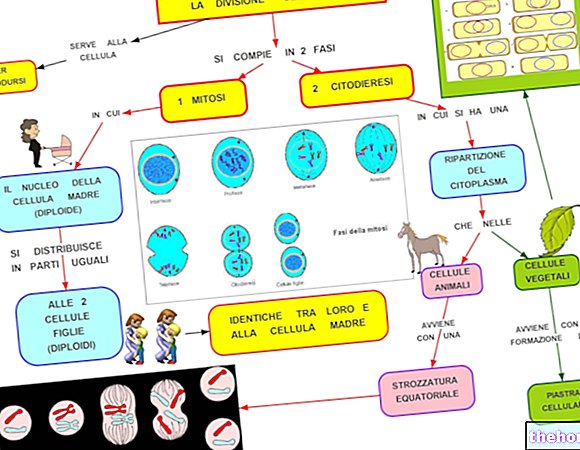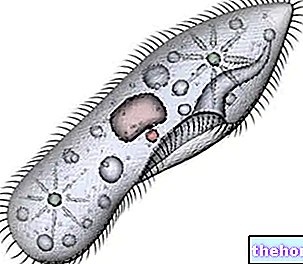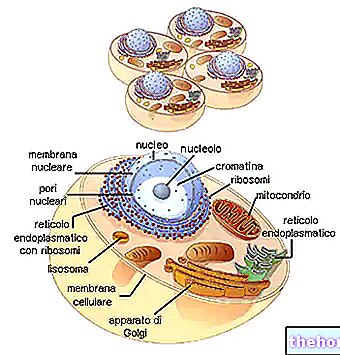Neomendelism is the study of phenomena that modify the transmission and manifestation of hereditary characters with respect to the schematic clarity of Mendel's laws.
The characters chosen by Mendel for his experiments were diallelic, segregated independently and presented the phenomenon of dominance. If Mendel had chosen other characters, he would probably have found and enunciated different laws.
INTERMEDIATE INHERITANCE
If instead of the color of peas Mendel had studied that of Mirabilis jalapa, the "beauty of the night", the first law of genetics would have been the law of intermediate inheritance. In this case, in fact, heterozygotes have an intermediate color between those of homozygotes . By crossing red varieties with white varieties, all individuals with a pink color are obtained; by crossing the latter, a ratio of 1: 2: 1 is found in F2, ie 25% reds, 50% pinks, 25% whites. , we know that these are the proportions between the two types of homozygotes and heterozygotes.
From the point of view of the phenotype of the heterozygote, it can be assumed that each of the two alleles contribute partially, for example respectively by synthesizing enzymes for red pigment and for white pigment starting from a common precursor substance: the two pigments, when mixed, give color intermediate.
CHARACTERS ADDITIVES AND POLYMERY
If Mendel had studied the color of human skin rather than that of peas, he would have had great difficulty in formulating a simple law.
From many subsequent researches it appears that the color of our skin (apart from environmental influences, such as sun exposure) presents a continuous variability, due to the concurrence of at least 4 or perhaps up to 9 different genes.
In discontinuous variability (as in the case of the clear yellow or green alternative) Mendelian laws find direct application, but in continuous variability another statistical reasoning is required.
If several allelic pairs contribute to determining a character in the phenotype, in each pair we can assume that we have a favorable and an unfavorable allele. Since we assume that each pair segregates independently, each individual can randomly have one or the other allele for each pair. It will be extremely unlikely that all favorable alleles are found randomly together in an individual, as it is unlikely that throwing a coin 9 times will result in 9 heads. The same is true for the opposite, while the probability of intermediate situations will be maximum.
This can be expressed by saying that the combinations of n pairs of alternative factors are expressed by the formula (a + b) n, in which the coefficients of the single terms (i.e. the respective frequencies of the single combinations of favorable and unfavorable factors), in the development of the power of the binomial, are given by the corresponding row of the so-called Tartaglia triangle. It is a so-called bell distribution, delimited by the Gauss curve.
A monomer is defined as a trait regulated by a single gene (i.e. by two or more alleles which can alternatively occupy a certain locus, i.e. a certain stretch of a certain chromosome), as in Mendel's experiences, while we speak of polymery when a trait is regulated by multiple genes placed in different loci.
POLYALLELY
A monomer character is not necessarily diallylelic. If the alternative alleles for a single locus are more than two, they can variously interact in their respective heterozygotes. Such a case will be found for example for the three alleles in the locus of the blood groups of the AB0 system, in which the homozygotes of the three alleles have the respective phenotype A, B and 0, but in the heterozygotes A and B they are dominant on 0, while in the " heterozygote AB is co-dominant Naturally in the case of poliallelia the mathematical formulation will be more complex and the number of genotypes and phenotypes will increase.
CODOMINANCE
Two alleles are said to be co-dominant when each determines the respective phenotypic result in both the homozygote and the heterozygote. This is precisely the case of AB heterozygotes (to cite the example of blood groups). The concept can be represented by thinking that each of the two alleles induces a separate enzymatic modification of a precursor substance: the two resulting structures do not interact, nor are they excluded. , for which both manifest themselves in the phenotype of the heterozygote. In reality, codominance and intermediate inheritance are two different manifestations of the same phenomenon, also called incomplete dominance.
PLEIOTROPY
Polymery (participation of several genes in the determination of the same phenotypic character) should not be confused with pleiotropy, which consists in the multiplicity of phenotypic manifestations by the same gene.
In reality, it can be considered that pleiotropy is due to the fact that the enzyme conditioned by a single gene controls a reaction that meshes with numerous other reactions (coupled, or upstream, or downstream), which in turn manifest their respective modifications in the phenotype .









.jpg)


















